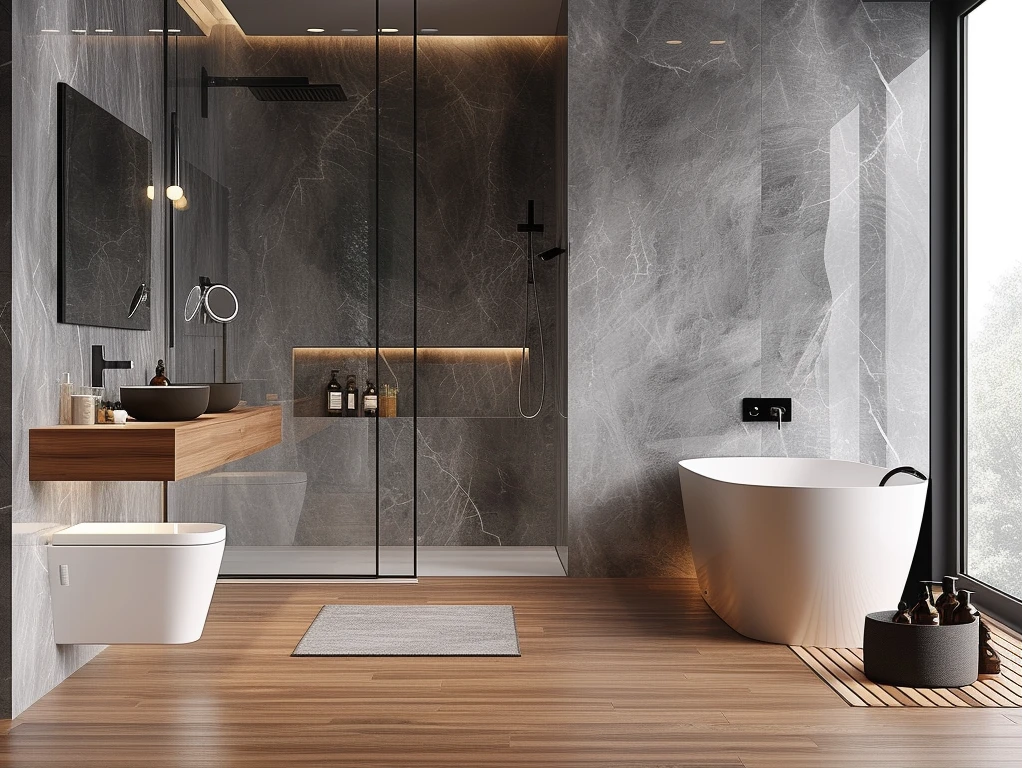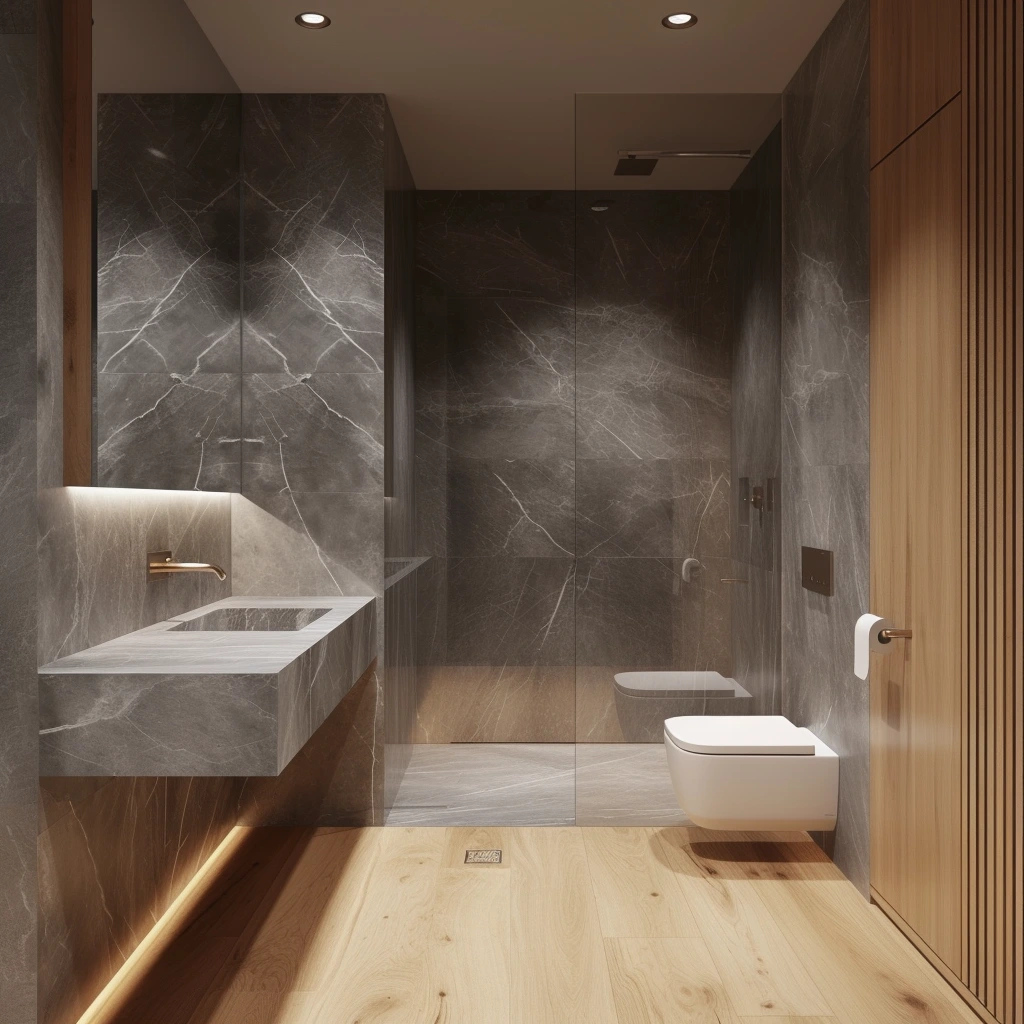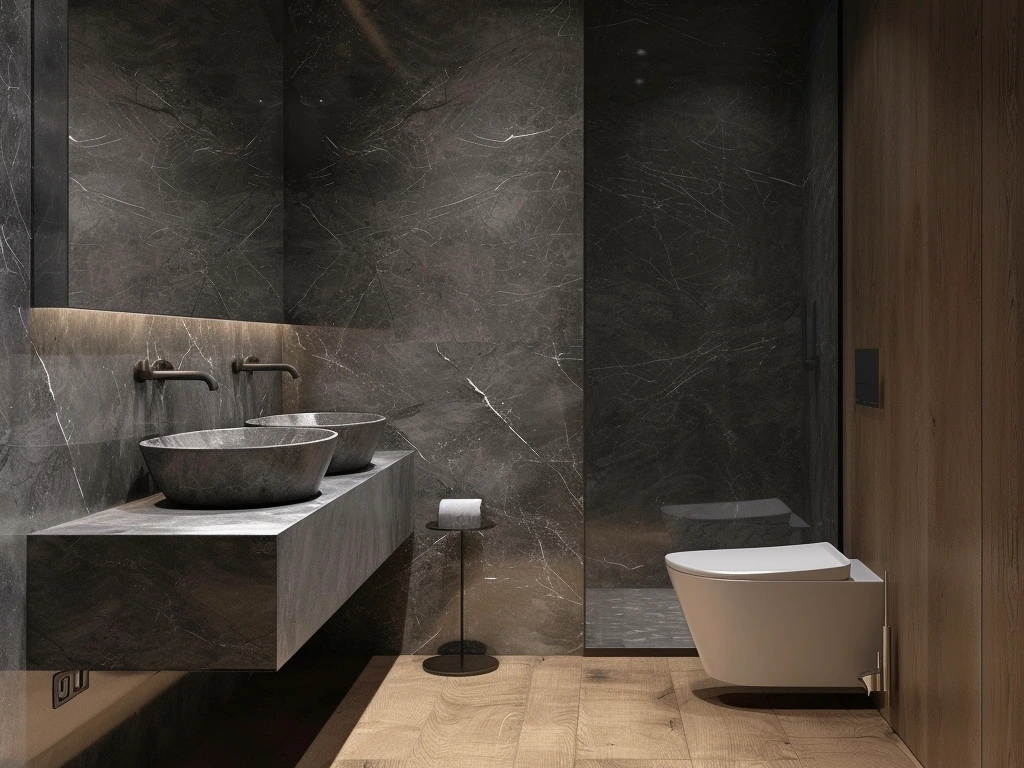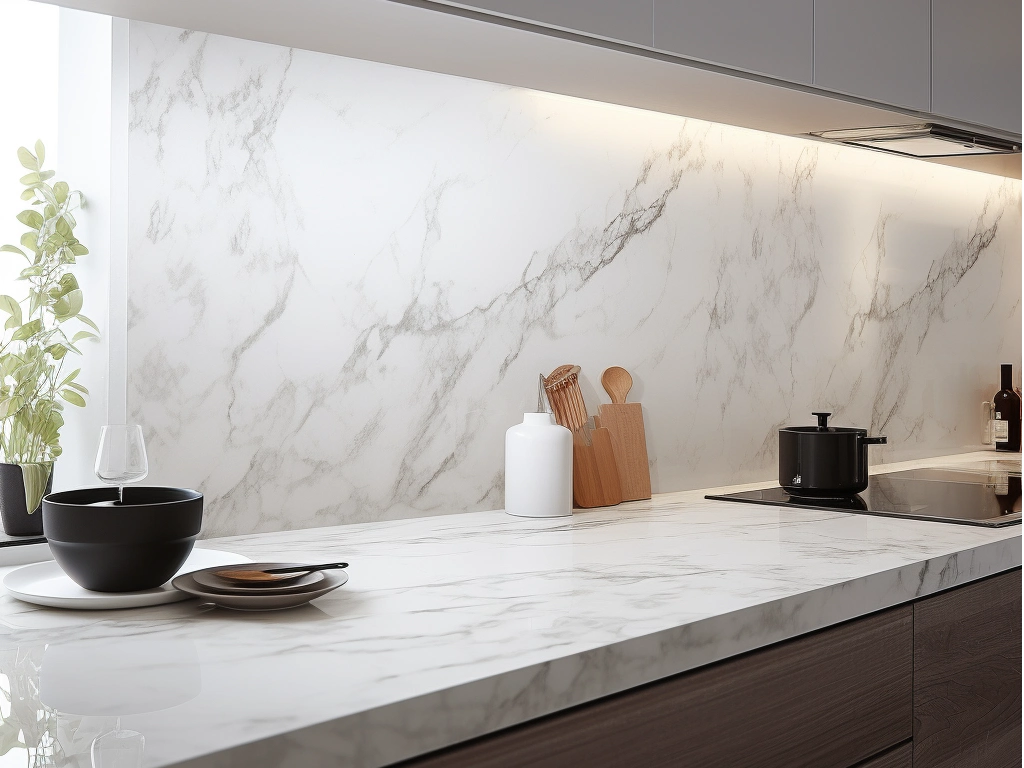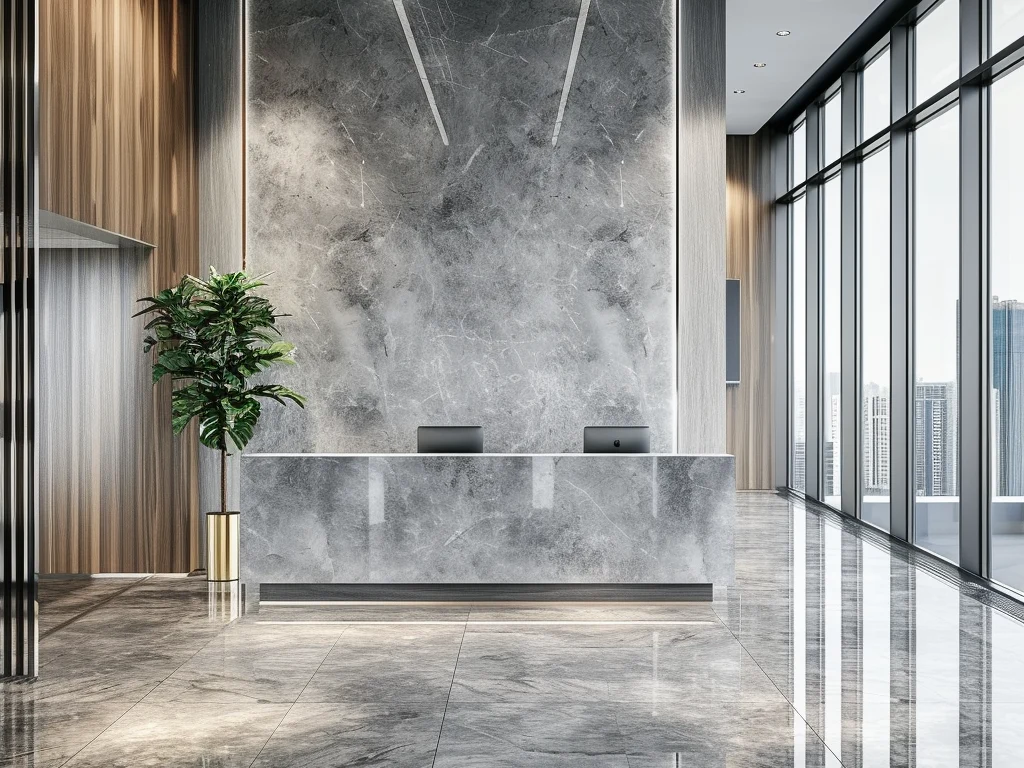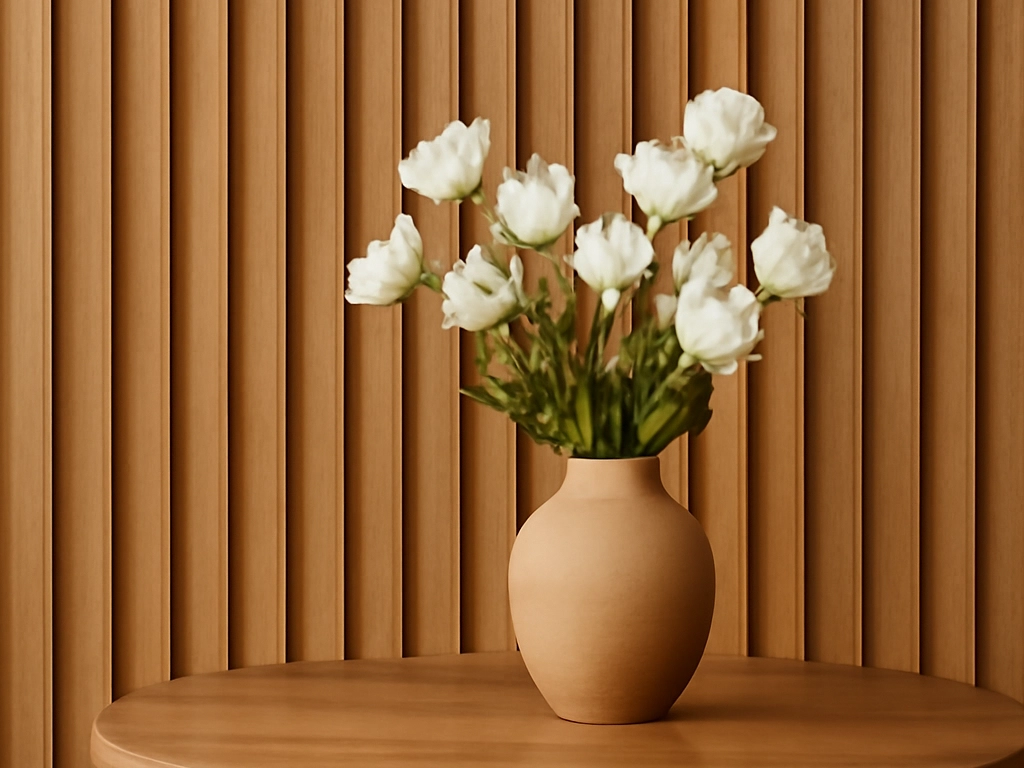Why Opt for WPC Wall Panels for Your Home?
WPC Wall Panels: A Green Building Choice
Wood Plastic Composite (WPC) wall panels are a major leap in eco-friendly construction materials. They consist of 30% high-density polyethylene (HDPE), 60% wood fiber, and 10% additives. This blend merges the best features of wood and plastic. It gives panels a natural, timber-like appearance. They are also strong and need little upkeep. WPC materials are fully recyclable. They are kind to the environment. These panels cut down on the use of forest resources. This makes them perfect for homeowners who value sustainability. They help reduce ecological impact. Their green credentials appeal to those seeking responsible building options. The composition ensures a balance of beauty and function. Homeowners can enjoy a natural look without harming the planet.
Strength of WPC Wall Panels Indoors
WPC wall panels are celebrated for their remarkable durability. They resist moisture, termites, and pests. This greatly extends their lifespan compared to traditional wood. Wooden alternatives often decay or get damaged. WPC panels stay intact. They also offer excellent UV stability. Their color retention is impressive. Even after long exposure to indoor lighting, they look fresh. The non-slip surface adds safety. Their resistance to cracking makes them ideal for homes. These qualities ensure they perform well in residential settings. Homeowners can trust them for long-lasting use. The panels withstand daily wear and tear. They maintain their appeal over time.
Long-Term Performance of WPC Wall Panels
Resistance to Warping and Heat Expansion
WPC wall panels excel in resisting warping. They also handle thermal expansion well. Unlike Stone Plastic Composite (SPC) materials, which may warp permanently in extreme heat, WPC panels bounce back. For example, SPC can fail under floor heating systems. WPC panels recover their shape. This reduces gaps caused by temperature or humidity shifts. Their resilience is a key advantage. It ensures consistent performance in varied climates. Homeowners can rely on their stability. The panels maintain their form over years. This makes them a dependable choice for any home.
Upkeep and Visual Appeal Over Time
WPC wall panels are designed for longevity. Their surfaces often have UV protection. Anti-static coatings are also common. These features boost wear resistance. The panels keep their original color. Their texture stays intact for years. They require minimal care. No painting or varnishing is needed. This saves time and money. Homeowners can avoid frequent renovations. The low maintenance makes them cost-effective. Their lasting beauty is a major draw. The panels look good even after heavy use. This ensures they remain a stylish home feature.
Cost Benefits of WPC Wall Panels for Homes
Upfront Costs vs. Long-Term Gains
The initial cost of WPC wall panels may be higher than wood or tiles. However, their long-term benefits are substantial. They last over 25 years. Their upkeep is minimal. This leads to significant savings. Their thermal insulation is another perk. It reduces energy bills. In hot weather, less air conditioning is needed. This cuts costs further. Over time, the panels prove economical. Homeowners see returns on their investment. The durability reduces replacement needs. The energy savings add up. WPC panels are a smart financial choice.
Market Trends and Buyer Choices
The WPC market is booming. Consumers are more aware of sustainability. They also value durability. Projections show the global WPC market reaching $16.5 billion by 2030. This growth reflects changing preferences. Buyers want eco-friendly materials. They also seek long-lasting performance. WPC panels meet these demands. They combine green benefits with style. Their popularity is rising. Homeowners are choosing them for modern designs. The market trend supports their adoption. WPC panels are a top choice for future-focused buyers.
Tackling Common Questions About WPC Wall Panels
Installation Hurdles and Fixes
Installing WPC wall panels is straightforward. They feature smart designs. Tongue-and-groove systems are common. Click-lock mechanisms are also used. These eliminate the need for glue or nails. DIY enthusiasts find them easy to install. Commercial projects benefit too. Strict quality checks ensure high standards. For example, retention payments are used at project completion. This guarantees top results. The ground must be level before installation. An expansion gap is needed. This accommodates thermal expansion. Tools like electric drills and stainless nails ensure secure placement. Plastic fittings in grooves create a tight fit. These steps boost durability. They also keep the panels looking great.
Environmental Certifications and Safety
WPC wall panels meet strict environmental standards. They comply with B1 fire resistance rules. This means they slow combustion. They self-extinguish in fires. No toxic gases are released. They are free from heavy metals. Harmful substances like benzene are absent. Third-party tests confirm their safety. They meet global norms like ISO9001 and ISO14001. Some worry about exaggerated eco-friendly claims. These tests dispel such concerns. WPC panels exceed industry standards. They are a safe, green choice for homes.
Evaluating Wear Resistance of Latitude’s WPC Wall Panels
Advanced Tech in Latitude’s Production
Latitude’s manufacturing process is cutting-edge. It enhances wear resistance. Their WPC panels have high-quality UV coatings. These protect against fading. Sunlight or indoor lighting won’t dull them. Anti-static coatings prevent dust buildup. This makes cleaning easier. Premium additives like calcium-zinc stabilizers are used. They outperform older lead-based options. This ensures the products thermal stability. The panels resist cracking or delamination. Even in tough conditions, they hold up. Latitude’s technology sets a high standard. Their panels are built to last.
Real-World Durability in Use
WPC wall panels perform well in many settings. They resist moisture. This makes them ideal for bathrooms or kitchens. They are termite-proof. This ensures longevity in pest-prone areas. Traditional wood rots or gets damaged. WPC panels stay strong. They handle extreme temperatures, from -30°C to 60°C. No warping occurs. Their UV stability keeps colors vibrant. Textures remain unchanged over years. In homes or businesses, they excel. Their adaptability is unmatched. They outperform other materials. Homeowners trust them for reliable performance.
Conclusion
WPC wall panels are a top choice for modern homes. They blend sustainability and durability. Their eco-friendly composition reduces environmental harm. Their strength ensures long-term use. Installation is simple. Maintenance is low. They save money over time. Market trends show growing demand. Latitude’s advanced technology boosts their appeal. They meet strict safety standards. For homeowners, WPC panels offer function and style. They address concerns about installation and green claims. These panels are a smart, lasting investment for any home.
FAQ
Q: What makes WPC wall panels durable for long-term use in homes?
A: WPC (Wood Plastic Composite) wall panels are highly durable due to their composition of 30% HDPE, 60% wood fiber, and 10% additives. They resist moisture, termites, and pests, extending their lifespan beyond traditional wood. Their UV stability and resistance to cracking ensure they maintain structural integrity and appearance over time.
Q: How do WPC wall panels perform in humid environments like bathrooms or kitchens?
A: WPC panels excel in humid environments. Their moisture-resistant properties prevent warping, rot, or mold growth, making them ideal for bathrooms, kitchens, or laundry rooms. This ensures long-term performance without deterioration.

